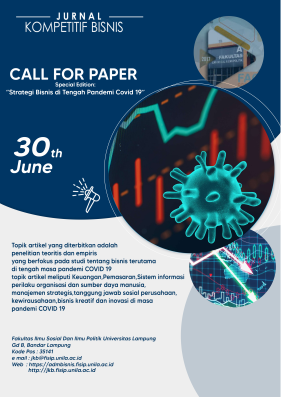CREDIT RESTRUCTURING EFFECT OF ANCHOR BANK LIQUIDITY DURING THE COVID-19 PANDEMIC
Abstract
The purpose of this article is to determine the effect of restructuring on Anchor Bank Liquidity During the Covid-19 Pandemic. The banking sector is one of the economic sectors most affected by Covid-19, due to the large number of customers withdrawing funds from banks, or business actors borrowing bank funds for their business operations. But this has made the Bank's non-performing loans (NPL) increase rapidly which could disrupt the Bank's Liquidity in its business operations, Covid-19 pandemic made the debtor's economic situation unable to pay its obligations. Because of this the, government made a Credit Restructuring policy towards banks, by appointing a Anchor Bank as a Participating Bank in assisting the Liquidity of small Banks as an Implementing Bank.The Government as Bank Indonesia directly provides Liquidity assistance to the Anchor Bank, and the Implementing Bank can directly follow the requirements and mechanism by making a request letter to request Liquidity assistance from the Anchor Bank and is approved directly by the Financial Services Authority (OJK). This of course also becomes the risk of the Anchor Bank in this Credit Restructuring, because in addition to the risk of bad debts of the Anchor Bank itself, the Anchor Bank must also bear the risk of bad credit from the Implementing Bank assisted by its Liquidity. With this liquidity assistance, it is expected that Participating Banks and Implementing Banks can continue to extend their credit to the public, so that the economic cycle in Indonesia can return stable.
Keyword: Banking, Credit Restructuring, Liquidity, Anchor Bank, Bad Credit.
Downloads
Downloads
Published
Issue
Section
License
Hak cipta dan hak kepemilikan lainnya yang berkaitan dengan artikel, seperti hak paten, Hak untuk menggunakan substansi artikel dalam karya masa depan sendiri, termasuk ceramah dan buku,Hak untuk mereproduksi artikel untuk keperluan sendiri, Hak untuk mengarsipkan diri sendiri artikel tersebutHak untuk masuk ke dalam pengaturan kontrak tambahan yang terpisah untuk distribusi non-eksklusif dari versi artikel yang diterbitkan (misalnya, mempostingnya ke repositori institusional atau menerbitkannya dalam sebuah buku), dengan pengakuan atas publikasi awal dalam jurnal ini


